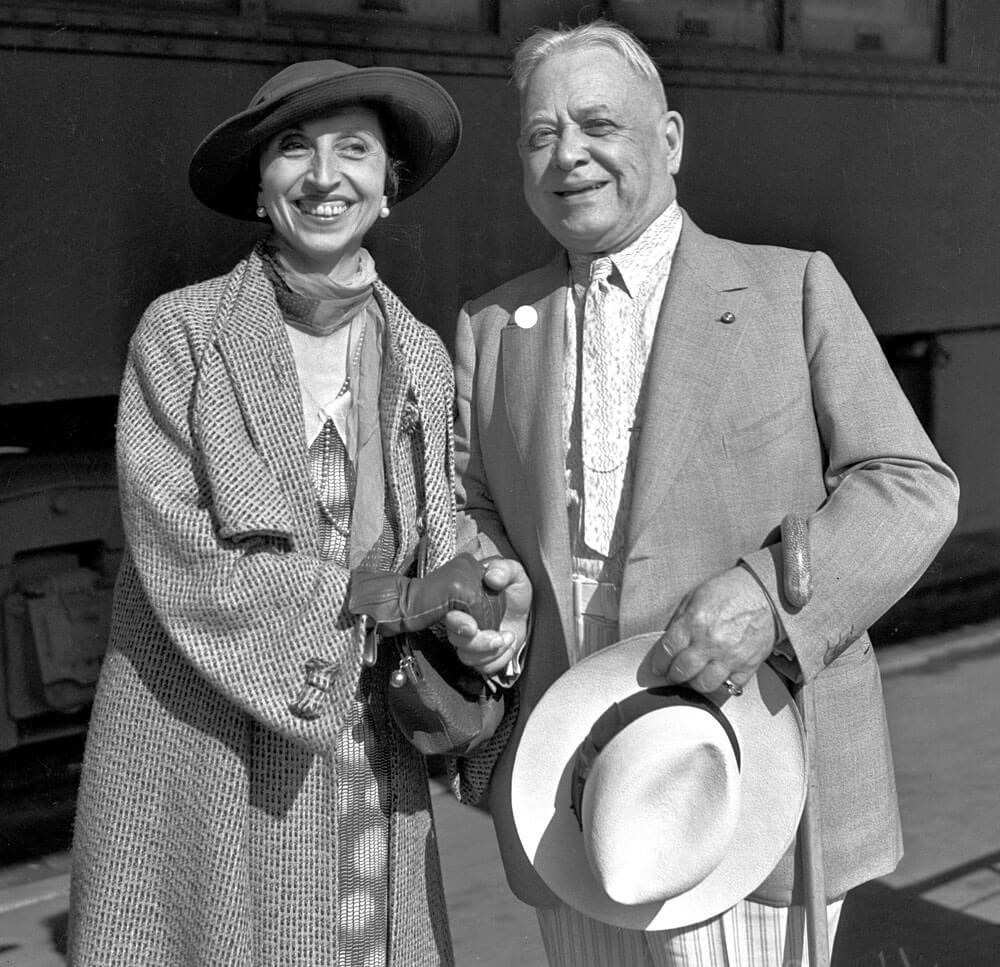Prior to the mid-19th century, thyroid surgery was considered excessively dangerous. The emergence of anaesthetic, antisepsis and improved instrumentation, however, increased its feasibility and frequency in Europe. The unhurried, judiciously antiseptic and haemostatic approach, advocated by Kocher, was popularised and several seminal methods to maintain recurrent laryngeal nerve integrity, thyroid and parathyroid function were published, [1,2].
Risk to the external branch of the superior laryngeal nerve, however, was not recognised as a complication until later; this historically became known as the nerve of Galli-Curci after renowned 20th-century Italian soprano, Amelita Galli-Curci [3].

LE Behymer greets Amelita Galli-Curci, opera singer, upon arrival at the railway station., Los Angeles, 1935.
This image comes from the Los Angeles Times Photographic Collection at the UCLA Library.
https://digital.library.ucla.edu/catalog/ark:/21198/zz002ddwzg
Galli-Curci found international fame in the United States with the Chicago, and later New York, Metropolitan Opera [3]. Recognised for her songbird operatics, Galli-Curci was plagued by dysphonia secondary to an increasingly enlarging goitre, later removed under local anaesthetic in 1935 by American thyroid surgeon and epidemiologist Arnold Kegel [4,5]. Galli-Curci’s eagerly awaited return to centre stage in 1936, however, was met with criticism as she was no longer able to achieve her previously renowned falsetto [3,5]. Was the once renowned soprano’s demise secondary to injury of the external branch of the superior laryngeal nerve (EBSL) or pure speculation?
Even in the present day, the lack of intraoperative EBSL surveillance does not appear to increase its risk of injury; factors deemed to predispose nerve damage include goitre size, entrapment of the nerve when securing the superior pole vessels or neuropraxia when handling superior pole structures. Though Galli-Curci’s goitre size of approximately 185g is well documented, little is known of the technique that was employed to perform Galli-Curci’s thyroidectomy to confidently claim this as the primary culprit [4].
Speculation of vocal decline with the ageing voice as a cause has garnered interest considering some coloratura sopranists adopt the lyric sopranist position during their latter career to accommodate their diminished vocal range [5]. However, the merit of this hypothesis is questionable, considering Galla-Curci’s return to stage was only 16 months postoperatively following rigorous vocal training, or so the literature claims [5].
More recently Bruno purports a postoperative hypothyroid state as a possible hypothesis due to reports of weight gain following her procedure [6]. He argues the absence of information surrounding the extent of surgery or how she was managed clinically or biochemically, if at all, with thyroid extract, does not clearly exclude the potential of postoperative hypothyroidism [6].
Without evidence of these missing puzzle pieces, we may very likely never be able to answer the question of whether we should truly embrace the ESBL nerve as the nerve of Galli-Curci, or whether doing so casts unfair aspersions on her surgeon’s technique. Irrespective, this tale serves as caution to the repercussions of EBSL damage.
References
1. Kocher T, Stiles HJ. Text-Book of Operative Surgery. London: Adam and Charles Black; 1895.
2. Halsted WS, Evans HM. I. The Parathyroid Glandules. Their Blood Supply and their Preservation in Operation upon the Thyroid Gland. Ann Surg 1907;46(4):489–506.
3. Le Massena CE. Galli-Curci’s Life of Song: a Biography. Palm Springs, CA: Monitor Book Co; 1977.
4. Crookes PF, Recabaren JA. Injury to the superior laryngeal nerve during thyroidectomy: lesson or myth? Ann Surg 2001;233:588–93.
5. Marchese-Ragona R, Restivo DA, Mylonakis I, et al. The superior laryngeal nerve injury of a famous soprano, Amelita Galli-Curci. Acta Otorhinolaryngol Ital 2013;33(1):67–71.
6. Bruno OD. Why did Amelita Galli-Curci lose her voice? Arch Endocrinol Metab 2019;63(4):314–7.




